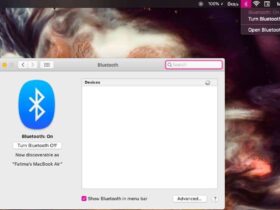If you own a Mac, you may have noticed that it has started to slow down over time. This can be frustrating, especially if you rely on your computer for work or personal use. In this article, we’ll take a look at some of the most common reasons why it may be running slow and what you can do to fix it.
Reasons Why Your Mac Is Running Slow
- Too many applications running at once If you have too many applications running at once, your Mac may become slow and unresponsive. To fix this, try closing any applications that you’re not using.
- Outdated software Outdated software can cause your Mac to slow down or even crash. Make sure to keep your operating system and applications up-to-date to avoid this issue.
- Hard drive is full If your hard drive is full, it can slow down your Mac’s performance. Try deleting any unnecessary files or applications to free up space.
- Not enough RAM If your Mac doesn’t have enough RAM, it may struggle to run multiple applications at once. Consider upgrading your RAM if you frequently use memory-intensive applications.
- Malware or viruses Malware or viruses can also cause your Mac to slow down. Make sure to install and run antivirus software to detect and remove any malicious software.
- Overheating Overheating can cause your Mac to slow down and even shut down. Make sure your Mac has proper ventilation and is not overheating.
- Hardware issues Hardware issues, such as a failing hard drive or a faulty fan, can also cause your Mac to slow down. Consider taking your Mac to a professional for repair if you suspect hardware issues.
How to Fix a Slow Mac?
- Close unnecessary applications As mentioned before, having too many applications running at once can slow down your Mac. Try closing any unnecessary applications to free up resources.
- Update software Keeping your operating system and applications up-to-date can fix any bugs or issues that may be causing your Mac to slow down.
- Free up space Deleting unnecessary files and applications can free up space on your hard drive and improve your Mac’s performance.
- Add more RAM If your Mac is struggling with memory-intensive applications, consider upgrading your RAM.
- Run antivirus software Install and run antivirus software to detect and remove any malware or viruses that may be causing your Mac to slow down.
- Manage startup items Your Mac may be slow to start up if you have too many applications set to launch at startup. Go to System Preferences > Users & Groups > Login Items to manage startup items.
- Check for hardware issues If you’ve tried all the above steps and your Mac is still running slow, it may be a hardware issue. Consider taking your Mac to a professional for repair.

Tips for Maintaining a Fast Mac
In addition to the steps outlined above, there are also several tips you can follow to maintain a fast Mac over time:
- Regularly clean your Mac Dust and debris can accumulate inside your Mac, which can cause it to overheat and slow down. Regularly cleaning your Mac can help prevent this issue. You can use compressed air or a soft cloth to clean the outside and inside of your Mac.
- Manage your files Organizing your files and folders can help improve your Mac’s performance. Try to keep your desktop clean and create folders to store documents, photos, and other files.
- Use an external hard drive If you’re running out of space on your Mac’s hard drive, consider using an external hard drive to store your files. This can help free up space and improve your Mac’s performance.
- Uninstall unused applications Unused applications can take up space on your hard drive and slow down your Mac. Try to uninstall any applications that you’re not using to free up space.
- Use a solid-state drive (SSD) Replacing your Mac’s hard drive with an SSD can significantly improve its performance. SSDs are faster and more reliable than traditional hard drives, which can help speed up your Mac.
By following these tips and taking care of your Mac, you can help maintain its performance and keep it running smoothly over time.
Conclusion
A slow Mac can be frustrating, but there are several reasons why it may be happening and several steps you can take to fix it. From closing unnecessary applications to upgrading your hardware, there are several ways to improve your Mac’s performance. Additionally, by following tips such as regularly cleaning your Mac and managing your files, you can help maintain a fast Mac over time. With these steps and tips, you can enjoy a faster, more responsive computer and get back to work or play with ease.













Leave a Reply